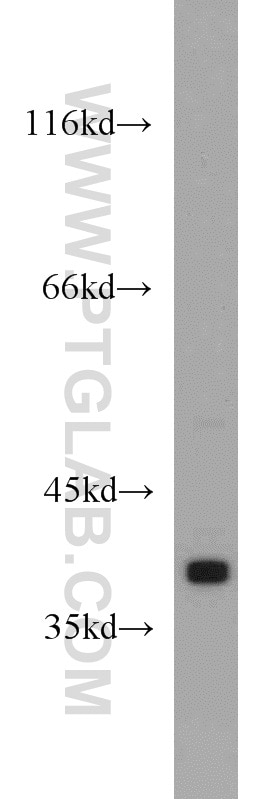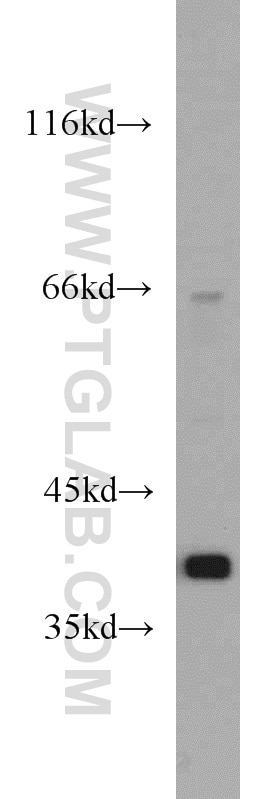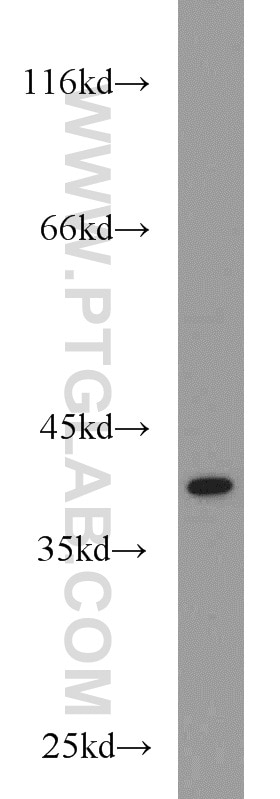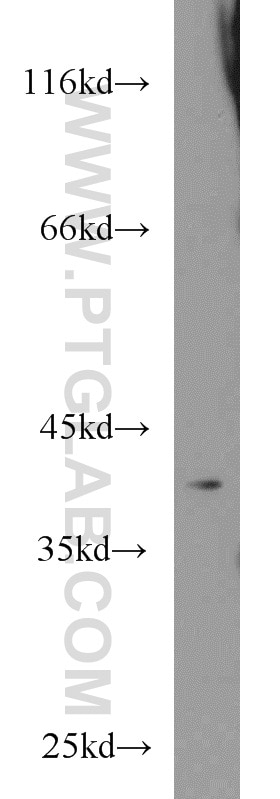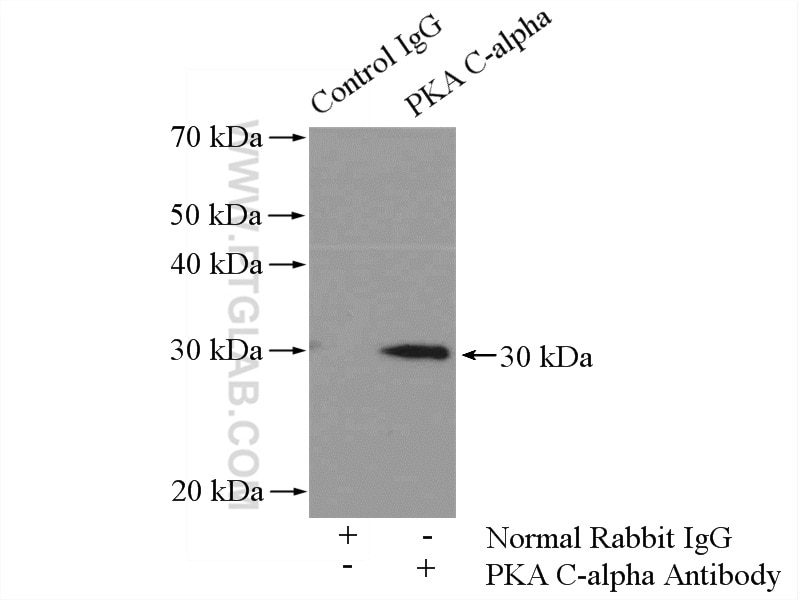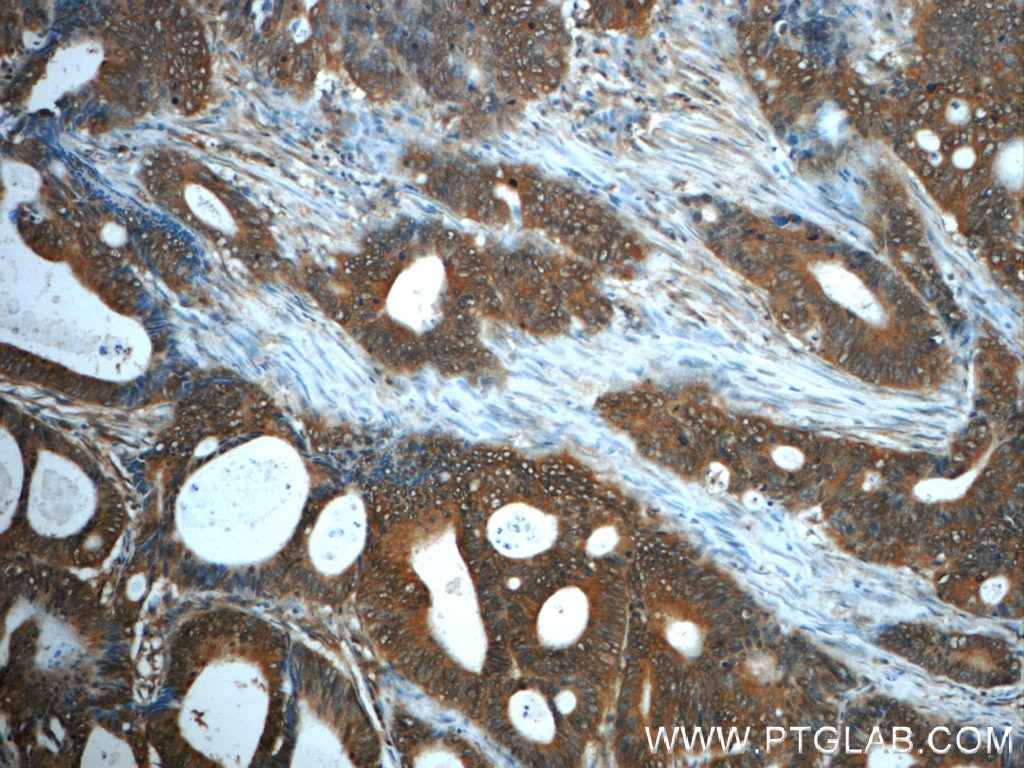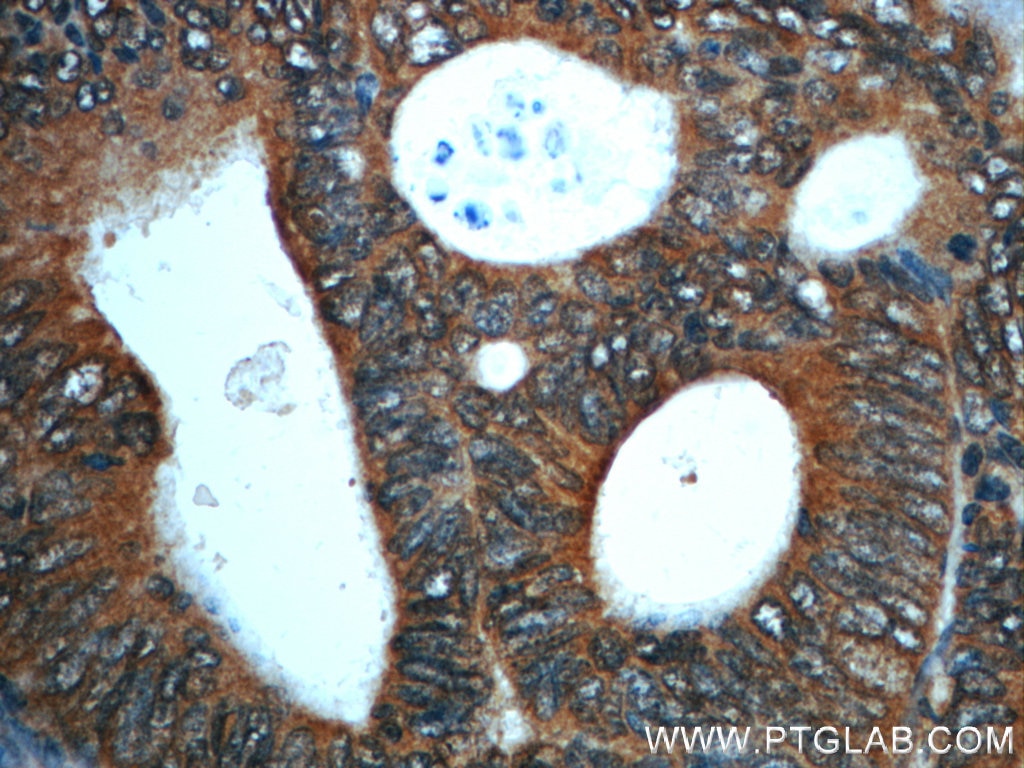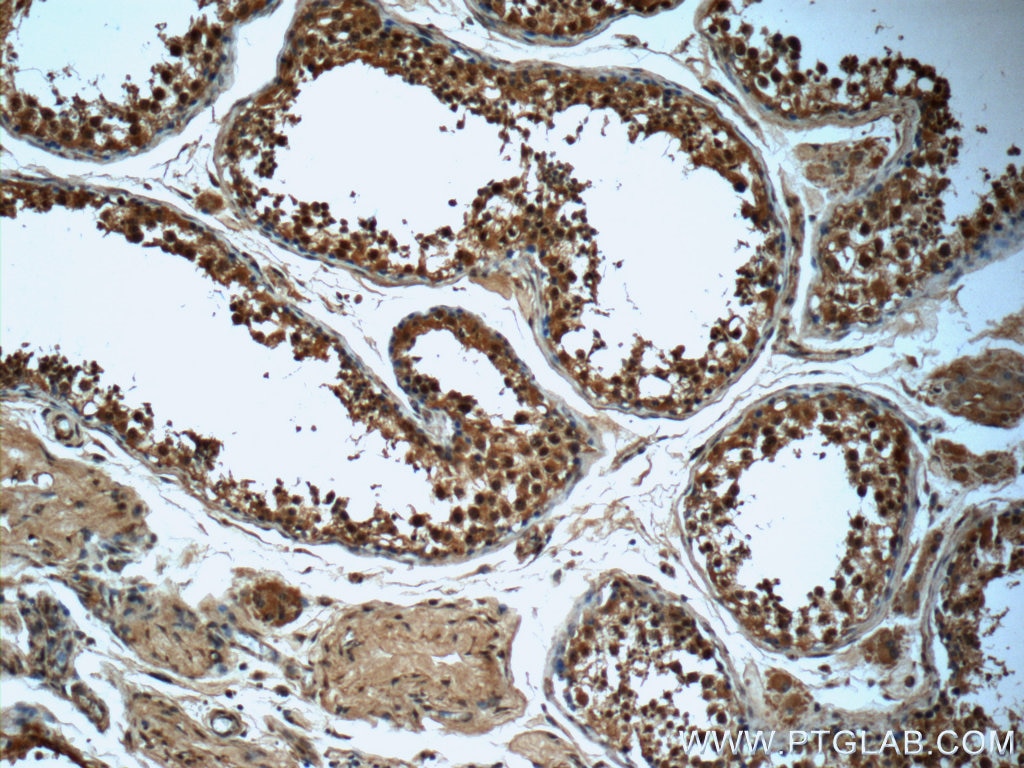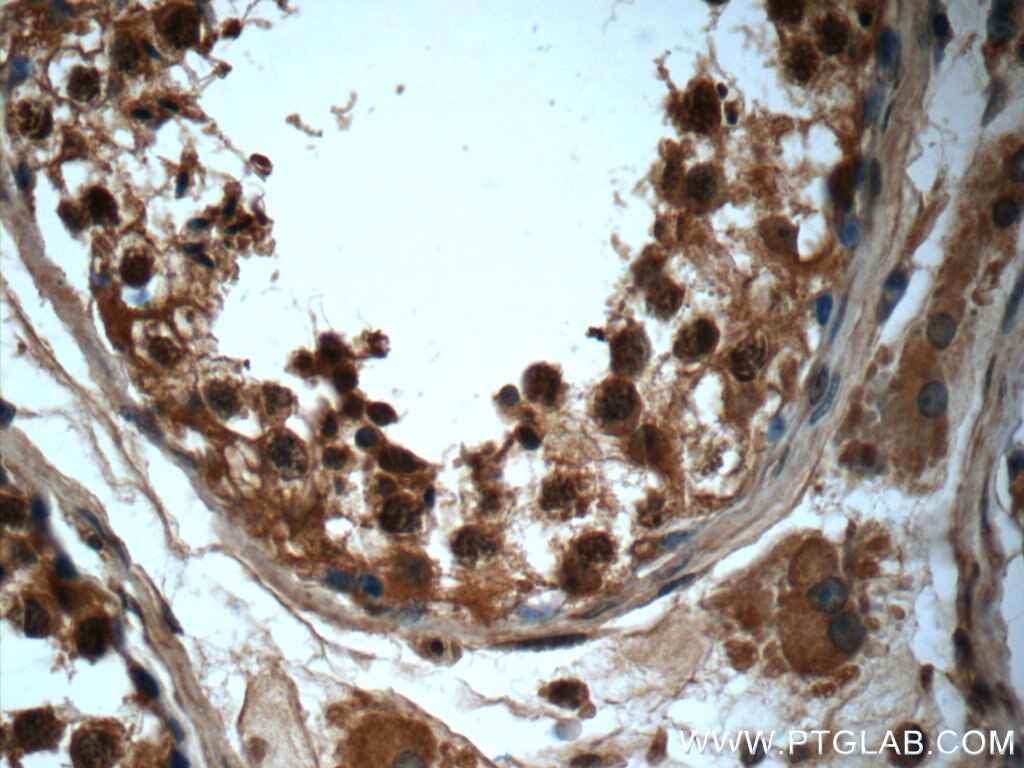Anticorps Polyclonal de lapin anti-PKA C-alpha specific
PKA C-alpha specific Polyclonal Antibody for IHC, IP, WB,ELISA
Hôte / Isotype
Lapin / IgG
Réactivité testée
Humain, souris
Applications
WB, IP, IHC, IF, CoIP, ELISA
Conjugaison
Non conjugué
N° de cat : 55388-1-AP
Synonymes
Galerie de données de validation
Applications testées
| Résultats positifs en WB | tissu testiculaire humain, tissu hépatique humain |
| Résultats positifs en IP | tissu cérébral de souris |
| Résultats positifs en IHC | tissu de cancer du côlon humain, tissu testiculaire humain il est suggéré de démasquer l'antigène avec un tampon de TE buffer pH 9.0; (*) À défaut, 'le démasquage de l'antigène peut être 'effectué avec un tampon citrate pH 6,0. |
Dilution recommandée
| Application | Dilution |
|---|---|
| Western Blot (WB) | WB : 1:500-1:1000 |
| Immunoprécipitation (IP) | IP : 0.5-4.0 ug for 1.0-3.0 mg of total protein lysate |
| Immunohistochimie (IHC) | IHC : 1:20-1:200 |
| It is recommended that this reagent should be titrated in each testing system to obtain optimal results. | |
| Sample-dependent, check data in validation data gallery | |
Applications publiées
| WB | See 11 publications below |
| IF | See 1 publications below |
| IP | See 1 publications below |
| CoIP | See 1 publications below |
Informations sur le produit
55388-1-AP cible PKA C-alpha specific dans les applications de WB, IP, IHC, IF, CoIP, ELISA et montre une réactivité avec des échantillons Humain, souris
| Réactivité | Humain, souris |
| Réactivité citée | Humain, souris |
| Hôte / Isotype | Lapin / IgG |
| Clonalité | Polyclonal |
| Type | Anticorps |
| Immunogène | Peptide |
| Nom complet | protein kinase, cAMP-dependent, catalytic, alpha |
| Masse moléculaire calculée | 41 kDa |
| Poids moléculaire observé | 38-43 kDa |
| Numéro d’acquisition GenBank | NM_002730 |
| Symbole du gène | PRKACA |
| Identification du gène (NCBI) | 5566 |
| Conjugaison | Non conjugué |
| Forme | Liquide |
| Méthode de purification | Purification par affinité contre l'antigène |
| Tampon de stockage | PBS avec azoture de sodium à 0,02 % et glycérol à 50 % pH 7,3 |
| Conditions de stockage | Stocker à -20 ℃. L'aliquotage n'est pas nécessaire pour le stockage à -20oC Les 20ul contiennent 0,1% de BSA. |
Informations générales
PRKACA, also named as PKACA and PKA C-alpha, belongs to the protein kinase superfamily. AGC Ser/Thr protein kinase family and cAMP subfamily. It phosphorylates a large number of substrates in the cytoplasm and the nucleus. This antibody is specific to PRKACA.
Protocole
| Product Specific Protocols | |
|---|---|
| WB protocol for PKA C-alpha specific antibody 55388-1-AP | Download protocol |
| IHC protocol for PKA C-alpha specific antibody 55388-1-AP | Download protocol |
| IP protocol for PKA C-alpha specific antibody 55388-1-AP | Download protocol |
| Standard Protocols | |
|---|---|
| Click here to view our Standard Protocols |
Publications
| Species | Application | Title |
|---|---|---|
Sci Total Environ Prolonged exposure of environmental concentration benzo[a]pyrene promoted cancer stemness through AhR/PKA/SOX2 dependent pathway in small cell lung cancer | ||
Oncotarget Multi-chaperone function modulation and association with cytoskeletal proteins are key features of the function of AIP in the pituitary gland. | ||
Front Pharmacol An Integrative Pharmacology-Based Strategy to Uncover the Mechanism of Xiong-Pi-Fang in Treating Coronary Heart Disease with Depression. | ||
Phytother Res Rapid antidepressant-like effect of Fructus Aurantii depends on cAMP-response element binding protein/Brain-derived neurotrophic facto by mediating synaptic transmission. | ||
Proteomics Label-Free Quantitative Phosphoproteomics Reveals Regulation of Vasodilator-Stimulated Phosphoprotein Upon Stathmin-1 Silencing in a Pair of Isogenic Colorectal Cancer Cell Lines. | ||
CNS Neurosci Ther Increased Expression of Transient Receptor Potential Vanilloid 4 in Cortical Lesions of Patients with Focal Cortical Dysplasia. |
